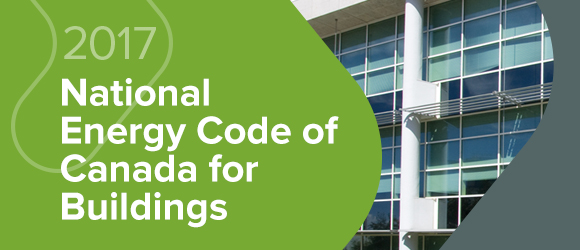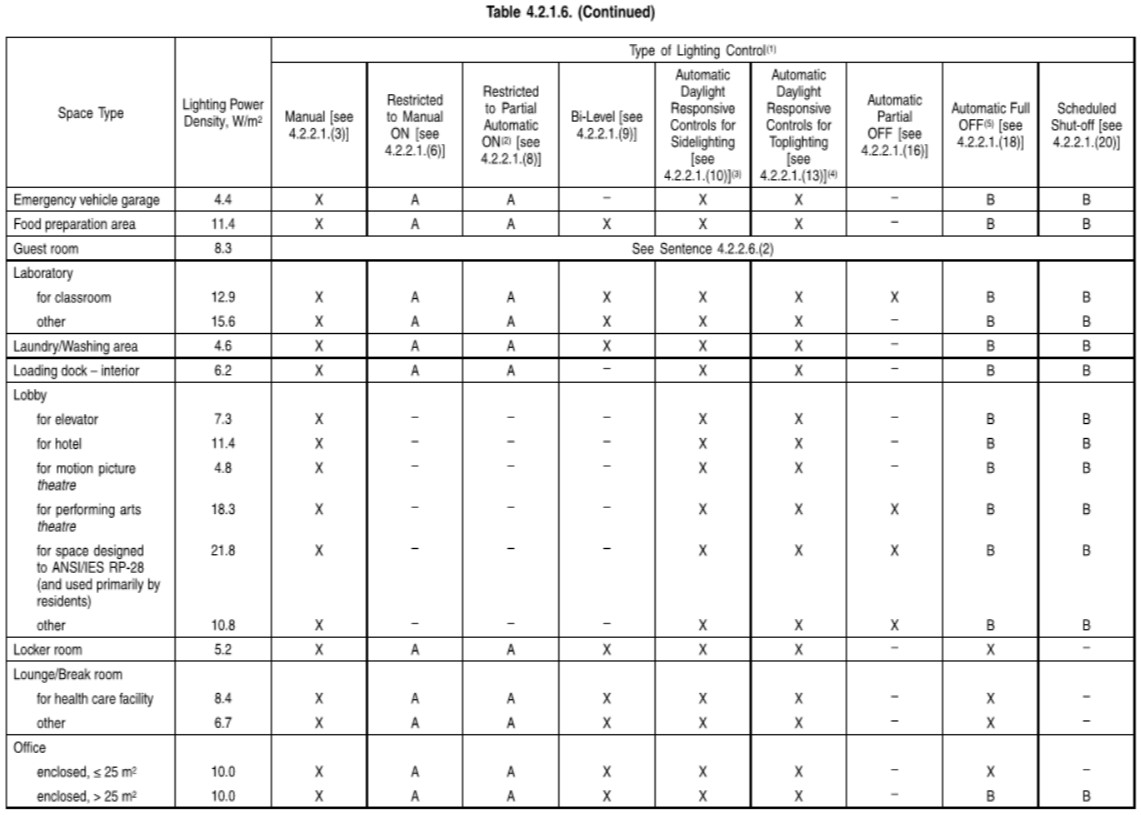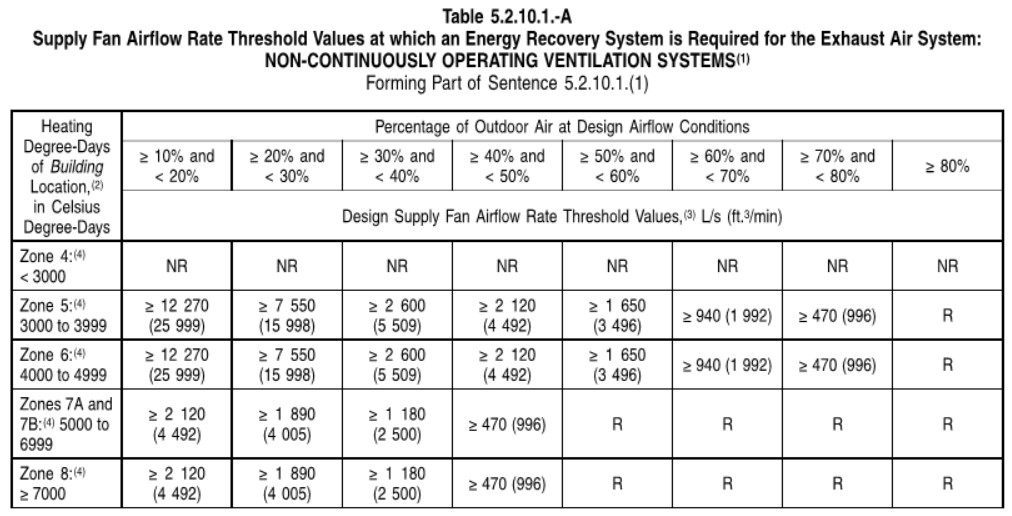
It’s been over two years since NECB 2011
came into force in Alberta and an update to NECB 2017 is just around
the corner. From the information given so far, it looks like Alberta
will be skipping over the 2015 version of the code and adopting the
2017 interim version of NECB; this is a significant improvement to
NECB 2015 and is expected to improve building performance by 10-15%
over NECB 2011. We thought this might be a good time to review the
lessons learned from modelling numerous buildings under NECB 2011
and look at the changes in the upcoming NECB 2017 code.
NECB 2017 will become effective April 1, 2019 with a 6 month
transition period (projects that submit for building permit after
October 1, 2019 must meet the new code).
NECB 2011 Lessons Learned
1. The Performance Path is the easiest
path to compliance
When the code was first announced we
discussed this in our introductory post on NECB 2011, and
recommended the performance path for most clients. This has only
been reinforced over the last two years as we have seen very few
projects opt for the prescriptive path. The only real reason to go
prescriptive is if you were already planning to build and achieve
envelope values that were at or above the prescriptive requirements
anyways; then the prescriptive path is definitely the way to go.
The main reason the performance path is
the easiest path to compliance is that it allows you to take credit
for lighting and hvac improvements to offset the envelope
requirements. In fact, we have modelled many buildings that have not
had to change a single thing (compared to before the energy code) to
achieve compliance (we will discuss this later). In fact, most of
the buildings that we have modelled have used envelope R-values
below R-18 to achieve compliance. The reason for this is discussed
in the next section.
2. NECB 2011 is too permissive and is
fairly easy to meet
While NECB 2011 establishes a baseline
for energy performance in buildings, in our experience, the energy
code isn’t likely to have achieved significant energy improvements
from the way we used to build prior to Nov 1, 2016. While the
prescriptive envelope requirements in the code are stringent (for
walls and roofs, not windows), as discussed previously, most people
will not follow the prescriptive path and will use the performance
path. It is within the performance path where a few key sections are
way too permissive, and in our opinion are give-aways that allow
building inefficient buildings. While some
might see this as a good thing, in the context of our climate
targets and transitioning to electrified net zero buildings, we see
this as a negative (it is in this context that we wrote this
section).
1. FDWR requirements
While section 3.2.1.4 (allowable
fenestration and door area) and section 8.4.4.4 (reference building
requirements) are poorly worded and have been misinterpreted by many
people, the intent of these sections essentially mean that the
reference building ALWAYS has a minimum FDWR
(fenestration and door area to gross wall area
ratio) ratio of at least 32.5% or so (in Edmonton).
This means that if the proposed building only has a FDWR ratio of
10%, the reference building has 3.25 times the amount of doors and
windows as the proposed. So forget about that R27 envelope for that
extra 22.5% of the building façade, instead of R27, you can use
U-2.2 or R-2.58 for 32.5% of the building. That reduces the
effective R-value for the whole building to about R-19. This is a
massive give-away and is the main reason why compliance can be
achieved so easily.
This code section should be revised to
have the reference building match the proposed FDWR up to the
maximum, then stay at the maximum. So in our previous example, both
the proposed and reference would have a 10% FDWR. Only if the
proposed went over 32.5% would the reference stay at 32.5%. This is
the way Ashrae 90.1 (used for LEED) works; Vancouver has also issued
an interpretation to NECB 2011 to modify this section to work this
way.
2. Window U-value and SHGC
requirements
Tied to the above code sections is the
rather weak window U-value requirements of 2.2 W/m2K.
This is essentially a dual pane window with aluminum frames and
should be made at least slightly more stringent. To be fair to NECB
2011, the Ashrae 90.1-2010 requirements are also pretty weak here.
The other change that should be made is
some direction around the Solar Heat Gain Coefficient (SHGC) for the
reference building. This is a huge factor in building performance
and isn’t even mentioned in the entire code. This allows
manipulation of the reference values to the benefit of the proposed
building.
3. Lighting Requirements
Without going into too much detail, the
lighting power density (LPD) requirements within NECB 2011 are very
permissive and don’t reflect the reality of current building
construction. Almost all buildings use LEDs now and most of the
requirements within NECB 2011 are 50-100% higher than this. For this
reason, almost all buildings achieve a 30-50% reduction in lighting
energy usage over the reference building.
4. HVAC requirements
There are too many to name, but a few
sections that should be more stringent include fan power
requirements, heat recovery requirements and space temperature
requirements for systems with radiant heating (the reference can be
modelled 2C colder if a radiant heating system is present even
though the reference system also has radiant heating).
The above lessons learned might seem
overly critical, and to its credit, NECB 2011 does at least
establish a baseline of energy performance. However, we
believe that with the climate challenge that is ahead of us, energy
codes should be pushing us much further down a path to Net Zero, not
simply bringing up the rear. We do however acknowledge that the
energy code has completely changed how the building industry looks at energy at least, with energy models
being used for almost every single building. This at least allows
the client to better understand how and where energy is being used
in their building, and gives every client the opportunity to make
energy a priority or at least a bigger consideration.
Changes from NECB 2011 to NECB 2017
NECB 2017 is designed to be an important
step towards Canada’s Pan-Canadian Framework goals of achieving ‘Net
Zero Energy Ready (NZER)’ building by 2030. NECB 2017 builds upon
the changes to NECB 2015 and steps up the requirements in a
significant way. The headline changes include reducing the thermal
transmittance of roofs, fenestration and doors; reducing losses
through thermal bridging assemblies; and reducing allowable skylight
area. NECB 2017 also introduces more stringent energy recovery
requirements and improves interior and exterior lighting
requirements pretty significantly over NECB 2011 and NECB 2015.
These changes will be discussed in more detail below:
1. Part 3 – Envelope requirements made
more stringent
Two of the headline changes in NECB 2017 are the more stringent overall thermal transmittance requirements for both roofs as well as fenestration and doors. Table 3.2.2.2 is shown below which shows that roofs in Zone 7A are now required to meet an overall thermal transmittance value of 0.138 W/(m2K) compared to 0.162 previously.

This means an RSI increase from 6.17
(R-35) to 7.25 (R-41). This is not a huge increase by any stretch
but makes the reference envelope even more stringent than it was
before.
One of the headline changes (at least on the surface) will be the more stringent requirements on Fenestration and
Doors, with the overall U-value dropping from U-2.2 W/(m2K)
to U-1.9 W/(m2K). This might not seem like much on the
surface but will have a significant impact on the type of windows
being used in commercial buildings. We think that double pane
windows with aluminum frames will be making their way into
obsolescence (good riddance).
This is
something we identified above and are really happy to see this
change implemented.
Another very significant change in NECB 2017 is the calculation method for Overall Thermal Transmittance (3.1.1.7). This might actually have a bigger effect than the changes mentioned above and could be one of the most significant changes in the code. Previous versions of the code permitted the exclusion of major structural elements and other elements that penetrate the envelope as long as they made up less than 2% of the wall area. This is no longer the case, the new calculation method requires taking into account a host of new elements into the effective R-value calculations including major structural elements (that penetrate the building envelope) such as balconies, joists, beams, columns etc… This essentially means that the effective R-value for many assemblies will drop compared to NECB 2011 and 2015. In some cases, calculating effective R-values using the new method could drop effective R-values by half! This is a massive change and will likely require the use of new tools and methods to accurately calculate envelope thermal resistance values that account for all thermal bridges in the envelope. These calculations will require significantly more time than under previous versions of the code and will definitely change the type of assemblies used in the building industry; z-girts and inefficient cladding systems are slowly going to go extinct (which is great).
2. Part 4 - Lighting Power Allowances
are more stringent
One of the other big changes in NECB 2017
addresses another one of our concerns discussed above, namely the
weak LPD requirements for the reference building. NECB 2017 has
harmonized not only the lighting power allowances, but also the
lighting categories and controls requirements with the current
version of Ashrae 90.1 (this change occurred in NECB 2015). The
figure below shows an excerpt from the new Table 4.2.1.6 (Lighting
Power Densities using space-by-space method).

As seen from this table, it is much more
comprehensive and detailed than the previous Table 4.2.1.6 and looks
very similar to the Ashrae 90.1 requirements in versions 2013 and
later.
The impact here will be significant as
can be seen from the comparison table below which shows the LPDs in
NECB 2011, 2015 and 2017. NECB 2015 harmonized requirements with
Ashrae 90.1 but didn’t lower the LPDs much or at all. This
definitely changes with NECB 2017 as the LPDs drop by 15-65% when
compared to NECB 2011. With the majority probably hovering around
the 20% mark.

As seen above, some spaces like offices
and classrooms only received a slight 15-25% improvement, whereas
some spaces like locker rooms and electrical/mechanical rooms
received a 50%+ improvement. In addition to the more stringent LPDs,
there are more stringent control requirements that need to be
applied which will lower the effective LPDs even further. The way
Table 4.2.1.6 works is that all controls marked with an ‘X’ must be
implemented for that space, in addition, one of the controls marked
with an ‘A’ and one with a ‘B’ must also be implemented. So going
back to our office example, not only is the LPD lowered from 11.9 to
10 W/m2, but the space requires occupancy controls (as in
NECB 2011) as well as automatic daylight controls and automatic or
scheduled shut-off. Thus, in an energy model, the energy usage for
the NECB 2017 case will likely be even smaller than the LPDs alone
would suggest. It should be noted that the modelling time and
complexity for modelling lighting systems will go up a fair bit for
a NECB 2017 compliance model.
NECB 2017 also introduces exterior
lighting power allowances which limit the allowable lighting on
building facades, entrances, loading areas etc...
3. Part 5 – Energy Recovery
requirements and HVAC efficiency updates
One of the headline changes in Part 5 is
definitely the revised requirements around Energy Recovery from
exhaust air systems (previously called Heat Recovery). Previously,
heat recovery was required if the sensible heat content of the
proposed exhaust system exceeded 150 kW (in our climate that is
about 2300 L/s of air). This requirement applied based on the
proposed exhaust air system, and mandated 50% sensible recovery.
The new requirements are more stringent
and are harmonized with Ashrae 90.1 to be based on flow rate and
outside air amount. Furthermore, in a performance path calculation,
the requirements apply based on the reference building flow
rates, not the proposed. It should also be noted that sensible and latent recovery is now required (hence the change from heat recovery to energy recovery). Table 5.2.10.1.-A is shown below:

We are pretty pleased with this change
and think this is a great approach for requiring energy recovery
(being based on outside air amounts).
There are other small changes to Part 5,
for example, the tables have been cleaned up for more clarity and
address some shortcomings in the previous code. Some of the more
notable changes are listed below (most of these are carried over
from NECB 2015):
In addition, there were some changes to
the Service Water Heating section (part 6), most notably the
addition of booster pump requirements and water volume requirements
in water storage tanks.
4. Part 8 – Changes to performance
path calculations
A lot of the revisions in this section
were made to clarify and make the section more user-friendly and
clear. We won’t go through all these changes, but there were some
notable revisions to the performance sections that actually
addressed some of our concerns with the previous version of the code
(discussed above).
Some of the other changes include updates
and changes to the recommended thermal templates, which is good to
see as we found the recommended templates to be pretty inaccurate,
but we still won’t be using these templates as we still don’t find
them accurate enough. We will continue using customized templates
that better reflect reality.
Conclusions
Overall we are really happy to see that
Alberta is skipping over the NECB 2015 version of the code (which
was pretty underwhelming) and is adopting NECB 2017. While the new
code doesn’t fix every short coming (especially FDWR requirements in
the reference building), there are some great new additions that
will definitely improve energy efficiency in new buildings.
In terms of impact, we feel that this
version of the code will be more impactful than NECB 2011 was. The
more stringent envelope, window and energy recovery requirements
will mean that some buildings that are passing now won’t be even
close with the new code. We believe that energy recovery will become
much more standard in the industry and envelopes and windows will
have to improve as well (especially considering the new envelope calculation methods). As before, each building will have a
cost-optimal solution for achieving compliance so it’s important to
understand where the best energy savings can be found. Upgrades that
cost the same amount might have a completely different energy
impact, so it’s important to not only choose building upgrades to
meet code, but ones that will actually have a meaningful impact on
energy and reducing the owner’s operational costs. This is where
trust in your energy consultant and modeller is important; the
recommendations they make, and the accuracy of their model have a
real cost impact. We have seen a few examples of code
misinterpretations or incorrect modelling that have cost clients
lots of time and money.
We hope that this post has helped shed some light on the upcoming changes in NECB 2017. Feel free to contact us if you have any questions or would like assistance on a project. Our extensive experience in energy modelling as well as designing net zero and high-performance buildings gives us a unique perspective on which are the most cost-effective solutions for meeting the energy code while giving the client the highest performing building for their money. We also hope more and more building owners decide to take the leap to Net Zero in 2019 and leave the energy code far behind. Stay tuned for a future post on the risks of building traditional buildings.
If you'd like to read the code itself, you may download it for free here (NRCan is providing this version of the code for free).
For a great presentation on NECB 2017 by Justin Pockar from the City of Calgary, check out this video.